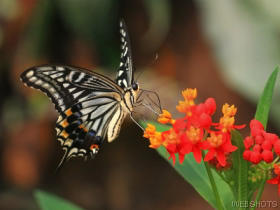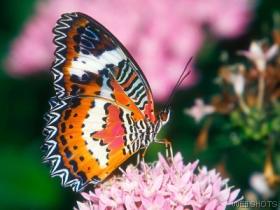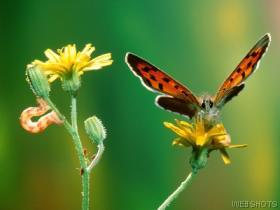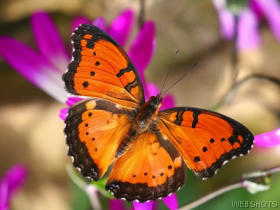 Heliconius erato is a butterfly commonly known under a variety of names, such as the "Red Postman", the "Small Postman", the "Red Passion Flower Butterfly", or the "Crimson-Patched Longwing". It is one of about 40 Neotropical species belonging to the genus Heliconius. The species is remarkably variable in color and form throughout northern South America, depending on location, and its various appearances can be difficult to distinguish from various other Heliconius butterflies such as Heliconius sara, also known as the Sara Longwing. Particularly hard to distinguish is the related Heliconius melpomene, or "The Postman", which mimics almost all the color forms of Heliconius erato; color forms are synchronized between the two throughout their common habitats. Heliconius erato is up to about 5.7 cm (2.25 inches) in wingspan with a jerky unelegance in flight.
Heliconius erato is a butterfly commonly known under a variety of names, such as the "Red Postman", the "Small Postman", the "Red Passion Flower Butterfly", or the "Crimson-Patched Longwing". It is one of about 40 Neotropical species belonging to the genus Heliconius. The species is remarkably variable in color and form throughout northern South America, depending on location, and its various appearances can be difficult to distinguish from various other Heliconius butterflies such as Heliconius sara, also known as the Sara Longwing. Particularly hard to distinguish is the related Heliconius melpomene, or "The Postman", which mimics almost all the color forms of Heliconius erato; color forms are synchronized between the two throughout their common habitats. Heliconius erato is up to about 5.7 cm (2.25 inches) in wingspan with a jerky unelegance in flight.Like Heliconius charitonius, H. erato is one of the few butterflies that collects and digests pollen, conferring considerable longevity to the adults (several months). Adults roost in groups, returning to the same location each night.





